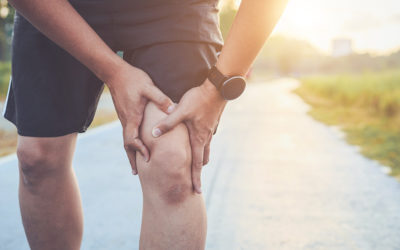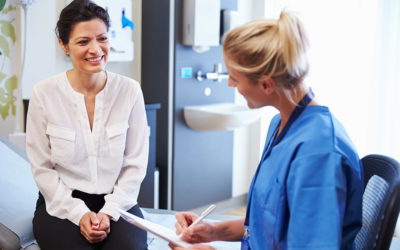It’s 9 p.m. on a Thursday night and my phone rings. I am on call for the hospital, but this time, the caller is actually a family friend. She says, “I keep having issues with indigestion and what feels like really bad heartburn. I’ve tried taking TUMS but it doesn’t...
Expert Health Tips
Take advantage of their expertise in areas that interest you with our blogs, podcasts and health emails. And if you need a doctor, we can help with that too!
Recent Posts From Our Health Experts
How to Survive the Holidays with Diabetes
It’s that time of year when the leaves are falling, days are getting shorter and finally it’s jacket weather. For those living with diabetes this can be a tough stretch ahead…the dreaded Holidays. Does this sound familiar? It’s much tougher to get that evening walk in...
Breast Cancer Awareness and Prevention: Be Your Best Advocate
As a doctor, my training and focus is entirely on breast health. I love my patients and love what I do. One thing that is extremely important to me is empowering women to take control of their health - especially their breast health. Did you know breast cancer affects...
The Truth About Knee Pain
If you’re experiencing knee pain, you're not alone. Knee pain is quite common and the reasons behind why we experience it can vary. Here's what you need to know about knee pain and some ways to treat it. What Are the Causes of Knee Pain? As an orthopedic surgeon, I...
Setting Expectations for Your Children
It's important to have clear expectations for your children starting at a young age. Having specific rules about chores, curfew and other expectations can make life easier for you and your child. It can also help your child gain confidence, grow and learn to be...
CBD Oil: Does It Work? Is It Safe? What Do I Need to Know?
Many of us have been stuck in traffic and noticed roadside signs or smoke shops advertising for CBD oil. But, does it work? Is it safe? Is it legal? How is it different than marijuana? As a doctor, I had these same questions and did my own research. Based on this, I...
7 Ways to Strengthen Your Bones & Lead an Active Life
Our bones are amazing structures that keep us upright, and along with muscles, ligaments and tendons, they allow us to move and participate in activities that make life worthwhile! Bones are made of minerals—calcium and phosphate—proteins, collagen and growth factors...
Are You Getting Enough ‘Vitamin N’?
‘Vitamin N’ is Nature. And nature is nurture. Our weather is getting nice for outdoor activities, and guidelines for COVID-19 are starting to ease. What better time to take it outside for a rejuvenating, wellness-boosting nature break? Research Shows Nature’s Health...
What Is a Thyroid & How Does It Affect My Health?
Although small, your thyroid has a big impact on your overall health. When it’s working as it should, most people don’t think about the role of their thyroid. As an endocrinologist, my specialty is the diagnosis and treatment of hormone-related conditions. So, let’s...
When Should You Start Screening for Colon Cancer? 50? 45? Never?!
When Should You Start Screening for Colon Cancer? 50? 45? Never?! If you answered 45 – good for you! Most people don’t realize that the recommended age by the American Cancer Society (ACS) to begin these screenings has been lowered from 50 to 45—and sooner if you have...
Fish Oil Benefits: New Research May Surprise You
Many of us have heard of fish oil and how it can benefit heart health, and as a cardiologist, I get asked a lot of questions about it. The truth is, studies vary on this supplement. Here is information from recent studies that provide insights into the benefits of...
Should Pregnant Women Get the COVID-19 Vaccine?
I’m pregnant, should I get the COVID-19 vaccine? This is a good question that many pregnant women or women thinking about becoming pregnant are asking. As a maternal-fetal medicine specialist, I’ll answer this and a few other questions in this blog. Everything we do...
Tune in to…Bryan Health Radio
Want to know more about a health topic, or tips to stay well? Our 10-minute podcasts provide practical, useful advice for a lifetime of good health. And, they’re easy to listen to while you’re on the go, at work or at home. Get valuable health information from doctors and health experts. Listen to or download a free podcast today!
Stay Informed For Your Health
You and your family are unique. At Bryan Health, we have a variety of classes, events, podcasts and more for all stages of life.
To stay in the know, subscribe to our monthly For Your Health email!
Concerned About Health Symptoms, and Unsure What to Do? Use our Symptom Checker and find out.
Whether it’s a rash, your child’s ear pain or your aching back, our symptom checker can help determine what to do. Just answer a few questions about your symptoms and receive recommendations for care.
Care When You Need It
Getting sick or hurt is never convenient. From minor illnesses and injuries to serious health conditions, turn to Bryan. We provide the expertise and care you need. Choose from our online Bryan Health ezVisit to Bryan Urgent Care walk-in clinic to three emergency rooms ready to help you.













